- Administrator
- Albums and Singles
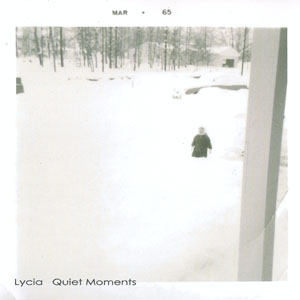 With the constant resurgence of various genres co-opted by younger generations, many an inactive artist has returned to the fold to capitalize on their previous notoriety. The synth pop trend of a few years back has unsurprisingly brought with it the revival industrial and goth scenes (and all of their various permutations), much as it did three decades ago. However, the reappearance of Mike VanPortfleet’s Lycia has little to do with this, and more to do with pure synchronicity: Quiet Moments is made up of material recorded over the past seven years. As such, it manages to fit in nicely with their earlier work while still sounding like new roads being taken, and also appearing at the right time to capture some much deserved attention.
With the constant resurgence of various genres co-opted by younger generations, many an inactive artist has returned to the fold to capitalize on their previous notoriety. The synth pop trend of a few years back has unsurprisingly brought with it the revival industrial and goth scenes (and all of their various permutations), much as it did three decades ago. However, the reappearance of Mike VanPortfleet’s Lycia has little to do with this, and more to do with pure synchronicity: Quiet Moments is made up of material recorded over the past seven years. As such, it manages to fit in nicely with their earlier work while still sounding like new roads being taken, and also appearing at the right time to capture some much deserved attention.
As a point of full disclosure, I personally missed out on most of the Projekt scene Lycia was associated with in the early to mid 1990s, as my tastes then were pretty much just rooted in the industrial and death rock subgenres exclusively.In those pre-WWW days and having little in the way of peers with similar taste, it mostly slipped by.However, going back and revisiting the era, Lycia's current material has stayed true to their earlier works, without sounding as dated as many of their peers do.
One thing that clearly has not changed is the overall bleak and dour mood to VanPortfleet's music, which manages to be lugubrious without being plodding or overly ponderous.It is slow and depressing, but never in a way that feels like it is trying too hard or forcing a mood for the sake of attention.Which is no easy feat on an album where most of the song titles reflect winter wastelands, and the closing triptych all contain the word "dead" in their names.
The front end of Quiet Moments is what harkens back most to their early days:the slow, funereal keyboards, reverb drenched digital drum machines, and the heavily processed guitar that has a distinct Robin Guthrie influence without sounding like any of his work.The opening title song exhibits all of these, alongside VanPortfleet's resigned, but not overly processed or dramatic vocals.The same elements lead in to "The Visitor," although at a much shorter length it comes together much quicker, throughout a hushed, fragile performance.
The middle portions lean more into ambient soundscape territory with a lower use of drums and vocals.The spacious and expansive "Greenland" is as cold and isolated as its namesake, with the double tracked vocals sounding more like a lost spirit than a second person in the mix."Grand Rapids" leads off with some combination of gorgeous electronics or guitar, conjuring an almost isolationist sounding piece that is largely beatless until the end, and is only slightly hampered by the overdramatic vibrato vocals.
The closing "Dead" trilogy is much more contemporaneous, with the stiff drum machine replaced with mangled electronic loops and sheets of static noise taking the place of the resonating synth pads.The guitar retains its characteristic sound throughout these, but in a very different context.Closer "The Soil is Dead" is perhaps the most drastically removed, with Tara Vanflower's vocals often coming across as disturbingly manic and wordless, but capturing a different, just as effective form of darkness.
The oddest moment is the uncharacteristically upbeat titled "Spring Trees," that, via its faster pace and lighter vocals, actually feels somewhat ethereal and not nearly as dreary as the ten songs that surround it.Ebullient it is not, but it does make for a brighter hued moment in an otherwise album of gray tones and frigid textures.
While even at its lightest moments there is little uplifting about Quiet Moments, but as an archetypical rainy (or snowy) day record, it works perfectly.It captures the mood and the vibe of that environment without coming across as stereotypical.Even though it stays within that certain feel, the duo never feels stuck, and instead examines all facets of that mood in ways that both recall their past but look toward a new, but still appropriately desolate, future.
samples:
 
Read More
- Administrator
- Albums and Singles
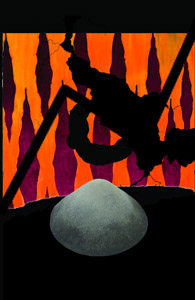 The first side of this cassette leads off in a realm closer to noise than anything of a more musical approach: thin, flaky distortion obscures deep, bellowing tones that are not necessarily dissonant, but not inviting either. Through this a churning, distorted rhythmic passage sneaks to the surface, bringing with it a bit of melody, albeit barely perceptible amidst the abstraction that surrounds it.
The first side of this cassette leads off in a realm closer to noise than anything of a more musical approach: thin, flaky distortion obscures deep, bellowing tones that are not necessarily dissonant, but not inviting either. Through this a churning, distorted rhythmic passage sneaks to the surface, bringing with it a bit of melody, albeit barely perceptible amidst the abstraction that surrounds it.
The UK’s Rejections, a relatively new project, has a consistent undercurrent of subverting more conventional, beat oriented electronic material.Although on this album they have stretched that abstraction even further, with most of these sidelong pieces keeping away from any overt rhythms and instead sneaking them in below layers of noise or other detritus.
Throughout the first side, there is a constant sense of movement as the piece moves from part to part and segment to segment. Submerged swells clash with sustained, shimmering electronics and an almost marching band like rhythm all make appearances in the half hour work.At times textural and meditative, and other times made up of blasting, ugly harsh bits of noise, the piece never stays still, but there is a logical and composed flow from one moment to the next.
The flip side of the tape is a little more constant in its approach, and its simple, reverberated drum machine opener is a bit reminiscent of the recent Clones EP from the project, which stayed closer to the traditional signifiers of techno music.Even when the overt beat drops out, the rhythm continues via more abstract loops and layers, even when it finally devolves into actual noise it ends up coming back around to a more musical close via a slowly pulsing bass synth passage.
While I enjoyed the more minimal techno orientation of Clones, here I favor the less traditional, more collage-like first half that eschews the obvious rhythms for more insinuated ones.It is a wonderful example of how something can be messy and tactile, yet still have a well developed sense of rhythm and structure, no matter how hidden it may be.The more rhythmic second half is no slouch either, but stands out as less unique and powerful in comparison.
samples:
 
Read More
- Administrator
- Albums and Singles
 Rephlex is almost definitely behind EDM (Electric Dance Music) A2 and B2, but they’re not owning up to it. Neither disc sports a label, neither comes with liner notes, and except for a few Jodey Kendrick aliases, most of the 13 featured artists are unrecognizable. Alain Kepler, Rob Kidley, and Trevor Dags could be anyone, but with electronic music as hyperactive and acid washed as this, the first anyone that comes to mind is Richard D. James.
Rephlex is almost definitely behind EDM (Electric Dance Music) A2 and B2, but they’re not owning up to it. Neither disc sports a label, neither comes with liner notes, and except for a few Jodey Kendrick aliases, most of the 13 featured artists are unrecognizable. Alain Kepler, Rob Kidley, and Trevor Dags could be anyone, but with electronic music as hyperactive and acid washed as this, the first anyone that comes to mind is Richard D. James.
Anonymity cuts like a double edged sword, especially for IDM producers or anyone else in the general vicinity. It drummed up a good deal of attention for The Tuss and Steinvord, but the question of authorship can overshadow whether a record is any good or not. Unfortunately, A2 and B2 suffer that fate, if only a little. Nearly every song is exciting and memorable, and there’s plenty of diversity here. Artists like Rob Kidley and J.K. obviously have some bubblebath in their blood, but Kepler, Heidi Lord, and Trevor Dags pull both records though smears of ambience and clubby pastiches that break away from the braindance bill. The familiar throb of drum ‘n’ bass shows up too, followed by the quiet sizzle of micro-sculpted dance and the analog hum of droning waves. Not everything inspires dance, but the title feels appropriate nonetheless.
That variety makes it hard to believe that one person could be behind every song, but both discs play more like albums than compilations, and they flow into each other as if they were one album assembled by one hand. A2 begins with a solid beat and keeps it going for more than half the album. Abrupt samples and distorted fragments cut in and out of the mix, and multi-threaded melodies criss-cross each other in jumbled chunks, but always in service of a syncopated rhythm. The songs also stick close to a four and a half minute limit, leaving an impression just by their blur of their movement. Repeat plays help to solidify the impact.

In the last 12 minutes, the music mellows into a series of relatively low-key ambient shorts. That leads naturally into B2, which proceeds at a more relaxed pace. These songs rely less on glitches and more on instrumental color. A few are just electric sketches, others are longer, more hypnotic tracks, but they caress more than punch. The artists blend beat with atmosphere and toy with acoustic samples, and J.K. tosses a fragment of Bach’s Toccata and Fugue into the mix on a song called "Man Hunt 1"; I can almost hear him laughing behind it. By the time Heidi Lord kicks the second half of B2 into full gear, everything’s very cool, blue, and chilled out. The record is still playful, but it loses much of its dance-y flavor and drifts into more ambient, psychedelic territory. It ends in a much different place than where it began, but the shift is gradual enough to keep the records linked up.
Maybe old man A-F-X shows up somewhere in the middle, or maybe that’s what Rephlex wants you to believe. Either way, it’s a frustrating game. Whether or not he’s releasing music is less interesting than the music itself. Does Heidi Lord have another record out there somewhere? Has TX81Z—aggravatingly named after a Yamaha synthesizer—produced anything else as trippy as "Googol?" Is Jodey Kendrick secretly one of the best electronic producers out there and the sole man behind this series? For now, nobody knows.
samples:
 
Read More
- Administrator
- Albums and Singles
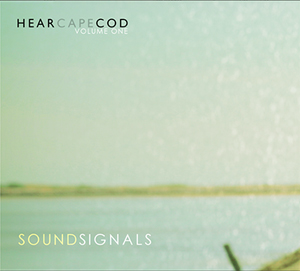 This project takes a different approach to field recordings in that it does not strive to capture a phenomenon that most will never experience, nor does it rely on something overly conceptual. Instead, it essentially acts as an audio postcard of the Cape Cod region, both the natural surroundings as well as the people and places. These recordings then form the foundation for artists such as Loscil and FourColor, amongst others, to create their own compositions from, which makes for a very impressive compilation.
This project takes a different approach to field recordings in that it does not strive to capture a phenomenon that most will never experience, nor does it rely on something overly conceptual. Instead, it essentially acts as an audio postcard of the Cape Cod region, both the natural surroundings as well as the people and places. These recordings then form the foundation for artists such as Loscil and FourColor, amongst others, to create their own compositions from, which makes for a very impressive compilation.
The disc of field recordings, captured by Steve Wilkes, who also curated the set, does an admirable job at capturing the sound and surroundings of the Cape Cod area, such as the recordings of waves at the various beaches and ferries that move people about the area.Fragments of conversations picked up in local eateries and grocery stores have a distinctly different sense to them, and almost a voyeuristic one, an aspect many recordings of this nature lack.
I very much enjoyed the pieces that provided the most drastic juxtapositions, such as the sparse recordings of cicadas and the sound of wind turbines, because while they could not have been more different in their sources, both result in a similar sort of sustained drone that could just as easily be the result of a synthesizer or software patch.
The second disc of this compilation sees the recordings acting as the seeds for a number of minimalist composers who often work with the sounds of nature, but each maintaining their own distinctive approach.Both Marcus Fischer and Simon Scott employ the source recordings the most overtly, with Fischer especially working with the beach recordings and some ever so slight processing.His integration of guitar and other instrumentation builds upon the natural beauty of the recordings without ever intruding on it.Scott works more electronics atop the field recordings, slowly guiding them up until reaching a rather rich musical conclusion.
Both Loscil and FourColor go much further in their contributions, making the field recordings an even less prominent aspect of their compositions.Loscil throws together synth like swells and a rhythmic like feel that leads to a taut take on ambient, while keeping the field recordings as another instrumental element rather than the specific focus.FourColor uses the source material more, but processes them nearly beyond recognition, resulting in what is initially a stuttering, sputtering outburst of sound that eventually settles into an understated sort of rhythmic surge without any distinct pedigree.
The first disc on its own is a bit of an odd release since it captures what it seeks to very well (while I have not been to Cape Cod, I have been close enough to vouch for its authenticity), but it does not go for the exotic heights an artist like Chris Watson does.It does provide a different sort of feeling though, almost like a guided tour as opposed to an ethnographic study, and at that it excels at Wilkes' hand.The second disc, however, is where this compilation shines, as the eight artists who contribute do a splendid job at working the sounds of Massachusetts into their own distinct compositions.
samples:
 
Read More
- Administrator
- Albums and Singles
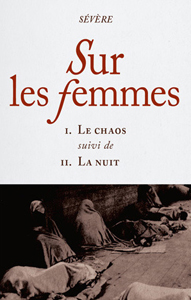 As half of avant metal duo Menace Ruine, S. (or whatever permutation of that initial he uses) does not like to be confined to that style, and his S/V\R side project does the same thing with harsh noise and industrial rhythms. At times grating and abrasive, and other times structured and pensive, this tape nicely covers those two extremes while still sounding like a unified whole.
As half of avant metal duo Menace Ruine, S. (or whatever permutation of that initial he uses) does not like to be confined to that style, and his S/V\R side project does the same thing with harsh noise and industrial rhythms. At times grating and abrasive, and other times structured and pensive, this tape nicely covers those two extremes while still sounding like a unified whole.
Split into two conceptual halves, the first part, "Le Chaos," is definitely the more noise oriented of the two sections."Vanités" immediately launches in with maxed out noise layers that grind with the intensity of an old Macronympha tape.What stands out, however, is a feeling of organization and structure, albeit subtle.The same holds true for "Suspecte":on the surface it is chaotic churning noise, but it has a sense of shape and order throughout, but never relenting until its dramatic, dead stop ending.
"Désordre" differs a bit in that comes across somewhat more disjointed, but there still order to be heard, even if it is a bit less overt amongst the sandpaper like layers of distortion."Anéanti" also opts to be a bit different ,beginning with some non-distorted electronic tweaking, but also hints at a deep, stuttering rhythm amongst the metallic ringing and massive pounding.
In some ways this is acts a teasing of the other half of the tape, "La Nuit," which scales back the noise dramatically and instead focuses on rudimentary electronic drumming and percussion."Contrition" begins the exact opposite as the other side, with a massive, echoing expanse and a monotone, heartbeat like thump that eventually becomes more complex, but rather than intense it comes across as more hollow and isolated.
The following "Désœuvrement" hinges on a noisy low end surge with thin and brittle drum machine rhythms atop.With that combination of basic rhythms with harsher electronics, I caught a bit of an early Esplendor Geometrico vibe, with a more ambient and less techno orientation.Closer "Blessé" drops the rhythms all together, leaving some grandiose synth pads that have a distinctly gothic sensibility to them, but carefully making sure to stay out of overwrought territories.
S/V\R definitely integrates some of the familiar tropes of noise, power electronics, and old school industrial into their sound, but it never fits perfectly into any specific classification.The dichotomy of sound and dynamics, clearly defined all the way to the split tape shell colors, makes for a powerful duality that I would be curious to hear more integrated together.
samples:
 
Read More
- Administrator
- Albums and Singles
 Cortini is best known as a member of Nine Inch Nails and How to Destroy Angels, but his work with Trent Reznor is quite a bit different from this opening salvo of a planned trilogy of releases using a Buchla Music Easel as his sole instrument.  Given my justified weariness of the recent vintage synthesizer revival, it is hard to say whether I will stick with Alessandro for the entire project, yet I have to admit that his work in this field is much better than most.  In fact, the opening and closing pieces of this double album are great enough to transcend any of the limitations that I erroneously felt this genre had.
Cortini is best known as a member of Nine Inch Nails and How to Destroy Angels, but his work with Trent Reznor is quite a bit different from this opening salvo of a planned trilogy of releases using a Buchla Music Easel as his sole instrument.  Given my justified weariness of the recent vintage synthesizer revival, it is hard to say whether I will stick with Alessandro for the entire project, yet I have to admit that his work in this field is much better than most.  In fact, the opening and closing pieces of this double album are great enough to transcend any of the limitations that I erroneously felt this genre had.
In some ways, Forse ("maybe") is a reaction or counterbalance to Cortini's work with Reznor, as Alessandro found the enormous amount of tools at NIN's disposal somewhat paralyzing as a composer.  Using only the Buchla might seem like an extreme antidote to that predicament, but the idea also interested Cortini because he has come to believe that changes in how notes sound can be just as powerful as melodic or harmonic transitions.  Forse certainly gives him ample opportunity to test that theory, as he opted to record the whole album live as well, limiting his already-limited palette still further.  Given that, along with the fact that all three volumes of Forse were composed and recorded in a single month, these pieces are by necessity fairly simple experiments in exploring the potential of both the instrument and of strict self-imposed compositional constraints.
Cortini is not wrong in his belief that changes in dynamics and spectra can be hugely effective, but the catch here is that it is just about all that is changing in each piece: the Buchla does have a small keyboard, but it is impossible to get very adventurous with it while still paying close attention the various oscillator, envelope, and filter controls involved.  Cortini, to his credit, does an excellent job striking an effective balance between melodic motion and tone manipulation, yet it is still the pieces with the strongest melodies or chord progressions that stand-out.  The most striking one is the opening "Basta," which unfolds a melancholy four-chord progression in dense, glacial swells that vibrantly buzz, reverberate, and dissolve.  The similarly affecting closer, "Sera,", on the other hand, is like a muted and ghostly negative image that eventually snowballs in power to a sizzling and snarling crescendo.
All of the pieces in between are fairly varied and enjoyable in their own right, which makes for a satisfying album, but they are more "great for something played live on a Buchla Music Easel" than "great" in a more universal sense (though the throbbing, futuristic "Gira" makes a strong argument for the latter).  That is fine by me though, as two songs that wildly exceed my expectations are a lot more than most albums offer–Cortini is not a goddamn sorcerer, so there is only so much he can do with the tools at hand, no matter how talented he is.  The Buchla does sound quite spectacular though: Cortini is able to achieve a presence, density, and unpredictability with his pieces that I do not often get to hear.  They may be locked into simple patterns, but those patterns often sound huge and alive and can erupt into all kinds of roiling chaos at a whim.  I like that.  I would probably like it even more if I could get excited about vintage synthesizer forays, but I will concede that Forse is exactly the sort of album that could make someone (at least, someone less burned-out than me) excited about such things.
 
Read More
- Administrator
- Albums and Singles
The Red Wharf website shop has a small quantity of the CD Parade (Nurse With Wound and Graham Bowers) for sale.
The CD Diploid (Epilogue to Parade) is now also available from the shop.
Please note that the above do not in any way constitute the Special Limited Edition and numbered Package which included a full colour, signed and numbered artwork insert released in June.
You may also be interested in the Special Limited Edition of 200 of Graham Bowers’ Trilogy, which consists of
‘Of Mary’s Blood’, ‘Transgression’, and ‘Eternal Ghosts’. Plus a signed A3 composite print of the artworks from all three albums.
Details can be found on the Red Wharf website shop. http://www.red-wharf.com/shop.htm
If you require any further information, or have queries relating to any of the content on the website,
please get in touch via email.
Read More
- Administrator
- Albums and Singles
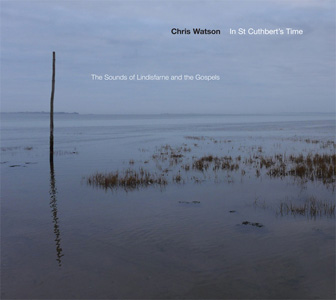 A distinctly different release than his last, El Tren Fantasma, this album not only acts as part of an overall larger project (a collaboration with faculty at Durham University), but also focuses on nature, rather than that disc’s use of man made transportation. Not just nature, but an attempt to capture the essence of of Lindisfarne Island as it would have sounded to St. Cuthbert in 700 AD. The result is an album that is a bit less compositionally oriented than El Tren Fantasma, but one that does an impeccable job at capturing a feel and an environment via audio.
A distinctly different release than his last, El Tren Fantasma, this album not only acts as part of an overall larger project (a collaboration with faculty at Durham University), but also focuses on nature, rather than that disc’s use of man made transportation. Not just nature, but an attempt to capture the essence of of Lindisfarne Island as it would have sounded to St. Cuthbert in 700 AD. The result is an album that is a bit less compositionally oriented than El Tren Fantasma, but one that does an impeccable job at capturing a feel and an environment via audio.
This disc is part of an exhibition of the Lindisfarne Gospels in England, and is intended to provide an audial context for the environment in which Eadfrith, the Bishop of Lindisfarne, was writing and illustrating the gospels that are being exhibited.Even disconnected from this context, the album is another example of Watson's unparalleled ability at capturing sound in a completely engrossing manner.
The album is broken up into four separate pieces, each titled for the season in which they were recorded.The vibrancy and activity of the recordings is closely tied to the time captured:the droning wind and infrequent bird calls of "Winter" are so much more cold and isolated than the aggressive avian flocks that permeate "Sumor."
Appropriately, both "Lencten" ("Spring") and "Haerfest" ("Autumn") sit somewhere between these two extremes in fauna and activity.The former captures the almost human like calls of land and water birds amidst a greater sense of life and vibrancy in comparison to the preceding piece."Haerfest" channels the bleakness of oncoming winter in its more muffled, darker sound.Gaggles of birds can be heard, likely migrating away to warmer climates while the vocalizations of seals and deer bring a bleaker, foreboding sense of the cold to come.
Surely the changes of climate have changed the environment that is the island of Lindisfarne from its medieval days, but Watson's recordings sound completely timeless, largely devoid of any human presence to solidify the isolation the Bishop experienced while completing the gospels.In fact, the only hint of humanity is the simple ringing of a hand bell towards the end of each piece, representing a call to prayer that would have been heard over 1300 years ago.
Watson's work definitely would make for an ideal accompaniment to the exhibition of the Lindisfarne Gospels, but even removed from that context it is a captivating, and beautifully captured disc of field recordings.It seems to be less of a composed work than some of Watson's other output, but even just a raw capturing of the environment makes for an amazing work.Again, there does not seem to be an environment that Watson cannot distill to its most fascinating sonic elements.
samples:
 
Read More
- Administrator
- Albums and Singles
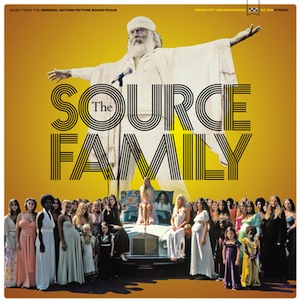 Innocuous enough as a sampler of some deeper, more sprawling artistic discography, The Source Family OST serves a second function as the audio equivalent of an ad pamphlet for its titular utopian cult. Nothing about them needs embellishing; Father Yod's colorful DIY psych collective is as convinced of their own message as they hope you'll be. Every aspect of the Family seems to match the beautiful, spontaneous mythos they spread, even Yod's appropriately spectacular demise. Behind all the posturing and spiritual gravitas, though, laid real music, and a group who made some interesting ideas come to life.
Innocuous enough as a sampler of some deeper, more sprawling artistic discography, The Source Family OST serves a second function as the audio equivalent of an ad pamphlet for its titular utopian cult. Nothing about them needs embellishing; Father Yod's colorful DIY psych collective is as convinced of their own message as they hope you'll be. Every aspect of the Family seems to match the beautiful, spontaneous mythos they spread, even Yod's appropriately spectacular demise. Behind all the posturing and spiritual gravitas, though, laid real music, and a group who made some interesting ideas come to life.
Broken up into a couple of bands, The Source Family OST explores different territories of now hallowed ground in rock and pop music. Spirit Of 76, the first group on the album, lays psychedelic flourish to gospel and traditional folk. Children Of The Sixth Root Race do something similar but more conventional, with "How Long In Time" not sounding too far off from the house band for some '70s educational cartoon. The Original Source Family repurposes old spirituals with chilling results, "Chant 10" being particularly stark and harrowing. Ya Ho Wa 13 has the most adventurous sound of the groups and is considered the primary artifact of the Source Family legend; distorted guitars, krautrock rhythms, and swirling phase effects are all standard fare. Each song by Ya Ho Wa 13 tries out some different styles, "I'm Gonna Take You Home" and "Penetration" striking as especially inspired. The biggest disappointment about Ya Ho Wa 13 is that every song included is an excerpt. This stringent editing brings an especially anticlimactic dissolution during Yod's address to the Beverly High School class of 1974 promoting free improv which, musically progressive and just a little bonkers, preludes a performance which gets cut off to save time.
The music is difficult to approach without a little context. Even setting aside the cult of personality behind Yod—prominent beard enthusiast, possible murderer, definite polygamist—and the organization of the Family, the songs here have serious historical weight. They borrow from acid psych, drone folk, krautrock, gospel, and occasionally a freaky hybrid of those genres unlike many things recorded at the time. They are sleek, even in their frayed looseness and hyperactive genre-hopping, and they commit fully to each disparate sound and style. The bands have serious chops, and there's not a bad song to be found, only a strange story likely to overshadow each note.
The Source Family isn't some cryptic, malevolent assembly of dark figures. They were (and still are, in some cases) business owners, community members, and devotees to an experiment more attuned to the aesthetics of culthood than the textbook social manipulations it entails. A product of their time, their forms and practices can be rediscovered in modern bands who adopt the same kind of sacred personas. The difference between then and now is Yod and Family grew up in a time where religion was to them a sweet, pure commodity, something adopted for secular means but used in total sincerity. Whatever Yod's past might have revealed about him and his intentions, the point is moot. It is, after all, the "eternal now." This is a document of how the fractured weirdness of an original hippie collective manifests itself, in strange and pleasing song.
samples:
 
Read More
- Administrator
- Albums and Singles

Artist: Skullflower / Mastery
Title: Skullflower / Mastery
Catalogue No: CSR165LP
Barcode: 5060174955419
Format: LP
Genre: Doom Metal / Noise / Black Metal
Shipping: 26th August
SKULLFLOWER presents a trinity of sombre meditations evoking Europe after the rain, drowned ruins, sunken dreams: spiders run across harpsichords in deserted schlosses and chateaus, doors slam and phantom demon choirs are summoned at seances by Blatavskian crones, whose impenetrable china blue dolls eyes open onto Tibetan vistas, terrible, ancient and remote...
MASTERY is improvised one man cosm(ag)ick. Total berzerker black metal, rooted in the tradition of true grim blackness, but filtered through Mastery's cracked perception, transforming this into something beyond true; a droned out and damaged, outsider blackness, that sounds pretty much unlike almost any other black metal.
Ltd x 500 copies.
Standard edition: 400 copies on purple vinyl.
Special edition: 100 copies on green vinyl through Cold Spring mailorder only!
Skullflower:
A1: Wolf Age (7:13)
A2: Red Crystal Serpent (7:18)
A3: Black Sunshine (9:15)
B1: Blood Electric (17:40)
Read More
- Administrator
- Albums and Singles

Artist: Wicked King Wicker
Title: Evolving
Catalogue No: CSR154CD
Barcode: 5060174954139
Format: CD
Genre: Doom Metal / Noise
Shipping: 26th August
Brand new studio album from Wicked King Wicker. WKW return to Cold Spring with their seventh album proper. Thick, black noise is underpinned by monolithic, crawling doom, in a way that only Wicked King Wicker can deliver. Total annihilation spread over 4 immense tracks. 45 minutes of music to shatter souls. Features cover art from Steve Cerio (The Residents' regular designer).
4. The High Exalted Nothing (7:30)
Read More

